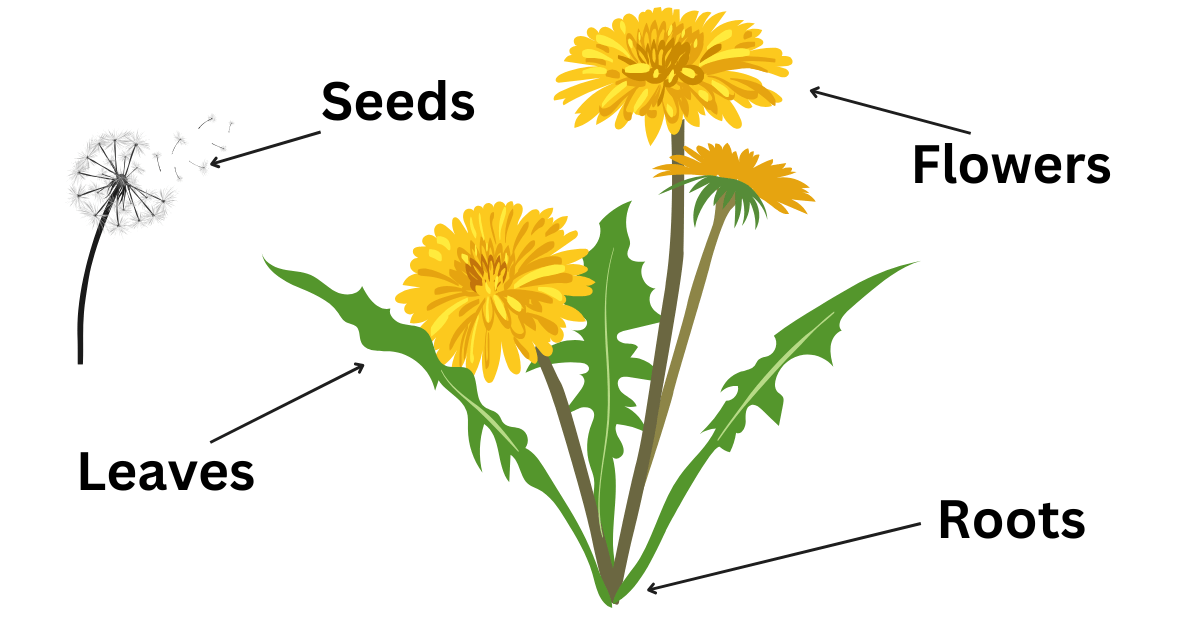The dandelion (Latin, Taraxacum officinale)
Lions tooth because of its tooth-like leaf amongst many other names.
Let’s talk about the Dandelion…
The plant is easily recognised by its bright yellow flowers and distinctive seed-heads has a storied history intertwined with us human beings that goes back centuries.Unfortunately, this amazing plant has been demonised as a weed that doesn’t have any purpose other than to be eradicated from our gardens, The truth is this extraordinary plant that mother nature has given us free of charge is a gift for our well-being in many ways.
Though often dismissed as a mere weed in modern times, dandelions have been revered for their medicinal, culinary, and ecological importance for centuries. Native to both Europe and Asia, dandelions have spread worldwide due to human migration and their own extraordinary adaptability to their environment.
A little History of the Dandelion
Historical records show that the ancients recognised and used the dandelion plant for its
medicinal properties. In traditional Chinese medicine and Ayurvedic practices, dandelions have been used literally for thousands of years to treat various ailments, from liver complaints to skin conditions amongst other ailments.

They were often the go to choice by the local herbalists
Dandelions became an everyday go to use in monastic herb gardens. They were often the go to of choice by the local herbalists to help give some relief with the some of the following ailments, digestion, alleviate fever, and help distil the blood of its anti toxins.
During the Renaissance, the plant’s uses extended as knowledge of botany really became a key of interest to those paying attention to what the earth as to offer.
The native Americans who were adapt at knowing the gifts of mother nature also adopted the dandelion after its first appearance to the Americas by European settlers, incorporating it into their healing custom to treat kidney sickness, heartburn, and swelling.
Botanical Identifying
Dandelions are hardy perennials that belong to the Asteraceae family, They can adapt in a variety of environments and conditions, from meadows to inner city life, and were often considered a pioneer species, capable of colonizing disturbed soils. Their taproots can grow deep into the soil, making them resilient and difficult to eradicate.
I personally think that is because of their connection to mother nature and us being part of the universe that it refuses to not help us heal. my thoughts only.
The plant has several identifiable parts:
- Leaves: Long, deeply toothed, and forming a rose shaped image almost to the eye at the base.
- Flowers: They are bright almost vibrant yellow in composite flowers that bloom almost all year-round in temperate climates that this pure gift of natural health as blessed us with.
- Seeds: Carried by the wind birds bees, us and other forces living here and sharing our
natural world, enabling widespread dispersion by wind. - Roots: Deep taproots that store nutrients and contribute to the plant’s productive abilities.

Nutritional Biography
Dandelions are a without doubt an amazing source of nourishment that aids the body. Look at the facts, every part of this plant is edible, and are rich in vitamins and minerals.
Here are some examples of its awesome properties:
- Leaves: High in vitamins A, C, and K, as well as calcium, iron, and potassium.
- Flowers: Contain antioxidants and can be used to make teas, syrups, or wines.
- Roots: A source of inulin, a prebiotic fibre that supports gut health.
Dandelions are also low in calories and contain beneficial bioactive compounds like flavonoids, polyphenols, and carotenoids.
Alternative Medicine Uses
Dandelions have long being used across different cultures far and wide. Have a read below for some of them:
- Gut Health: The plant’s sometimes described bitter taste can arouse bile production, aiding digestion and aid in reducing the tummy swelling. Dandelion root tea is normally used to aid stomach upset and help improve ones appetite.
- Liver Support: Acknowledged as a liver tonic, dandelion root helps detoxify the liver and may help to alleviate symptoms of jaundice and hepatitis.
- Kidney and Urinary Health: the amazing awesomely mothers natures free properties of
dandelion make it effective for flushing toxins from the urinary system and preventing
urinary tract infections, the medical terminology (UTIs). - Skin Conditions: Regular applications of dandelion sap or poultices have been used to treat acne, eczema, and warts.
- Immune Support: Rich in antioxidants and anti-inflammatory compounds, dandelions
bolster the immune system and may reduce the risk of chronic diseases.
Modern Scientific Research
Modern research has started to recognise and validate many traditional herbalists claims about the dandelion. Studies have focused on their possible benefits for liver health, cancer prevention, and metabolic disorders.
- Liver Health: Research has shown that dandelion extract can protect liver cells from
oxidative stress and promote the revival of damaged tissue. This supports its historical use as a liver tonic. - Anti-Cancer Properties: Laboratory studies have demonstrated that dandelion root extract induces apoptosis (programmed cell death) in certain cancer cells, including those of melanoma, leukaemia, and pancreatic cancer. While exploratory, these finding simply that dandelions may have chemo preventive potential.
- Blood Sugar Regulation: The inulin in dandelion roots has been found to help regulate
blood sugar levels by improving insulin sensitivity. This makes dandelions a promising aid for managing type 2 diabetes. - Heart Health: The potassium content of dandelions supports healthy blood pressure levels, while their antioxidant properties may reduce inflammation in blood vessels.
Culinary Uses
Dandelions have been a food source for centuries, valued for their flavour and nutrition. Here are some of the ways the plant can be utilised into diets:
- Salads: Young dandelion leaves add a peppery, slightly bitter flavour to salads.
- Teas and Coffees: Roasting the dandelion roots can be used as a caffeine-free coffee alternative, while the leaves and flowers can be brewed into making herbal teas.
- Wine and Syrups: Dandelion flowers are fermented to make wine or boiled with sugar to make syrup.
- Sautéed Greens: Similar to spinach or kale, dandelion greens can be sautéed with garlic and olive oil for a nutritious side dish.
Environment, Risks & Precautions
 Risks and Precautions
Risks and Precautions
While dandelions are generally safe for consumption and use, certain precautions are necessary:
- Allergic Reactions: Some individuals may be allergic to dandelion pollen or latex in the sap.
- Medication Interactions: Dandelions can interact with diuretics, blood thinners, and medications for diabetes. Consult a healthcare provider before using dandelion supplements.
Conclusion
The dandelion is far more than a common weed. Its historical significance, nutritional value, medicinal properties, and environmental contributions underscore its importance to human health and the natural world. As modern science continues to explore its potential, the dandelion may reclaim its place as a respected and valuable plant, rather than an overlooked nuisance. From ancient herbal remedies to contemporary research, the humble dandelion exemplifies the resilience and utility of nature’s gifts.





